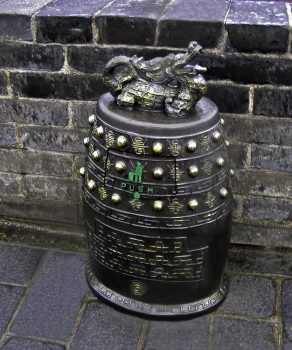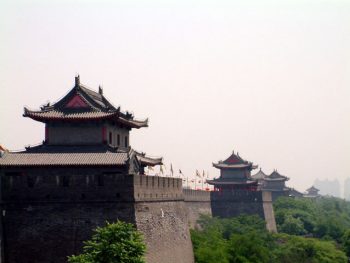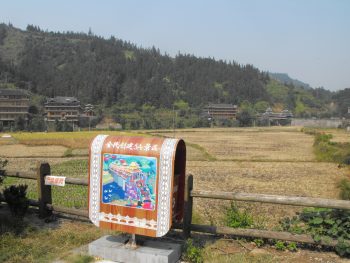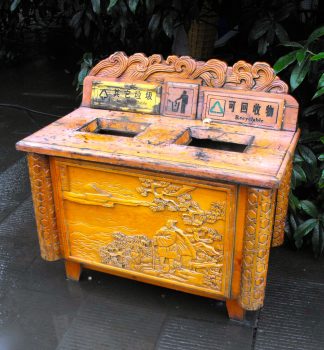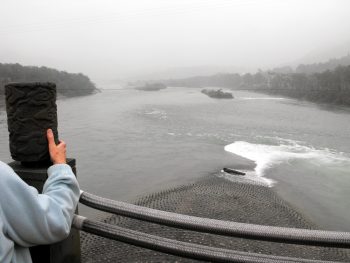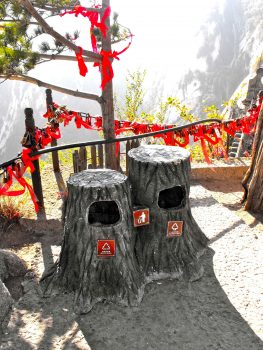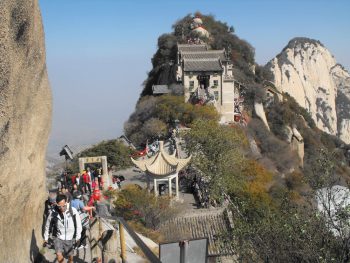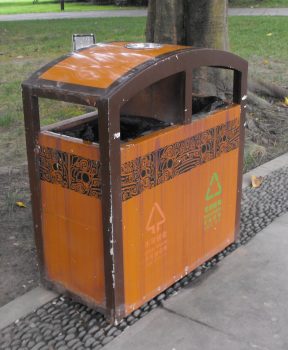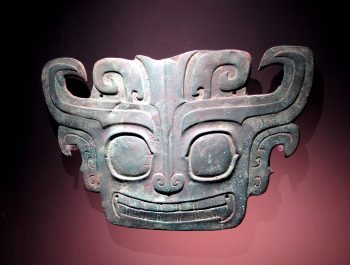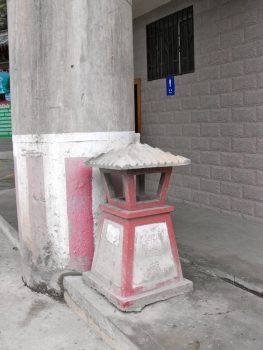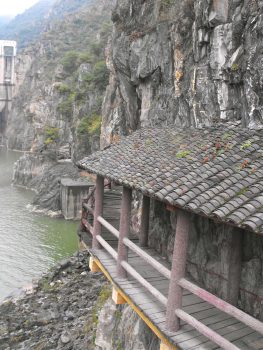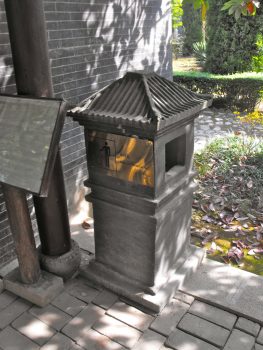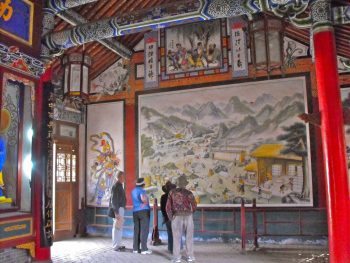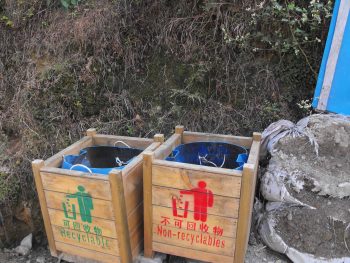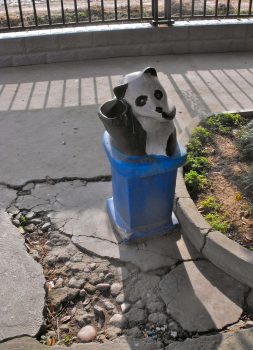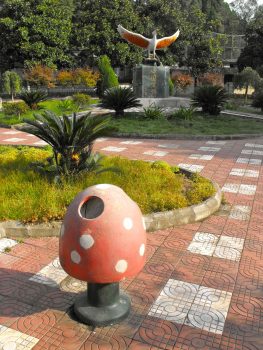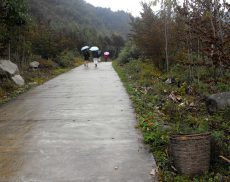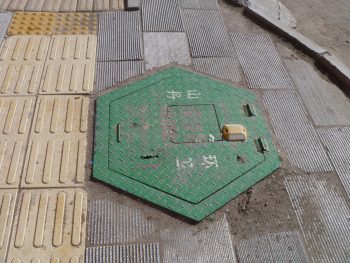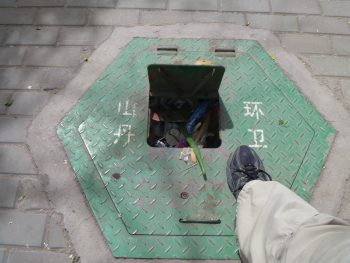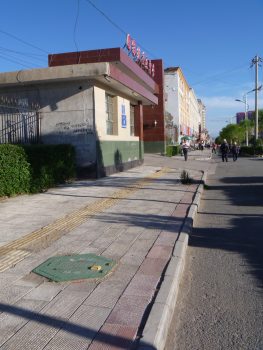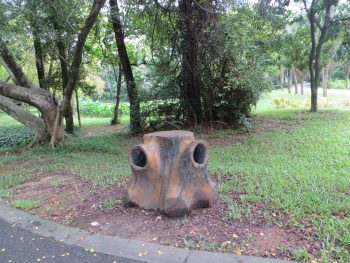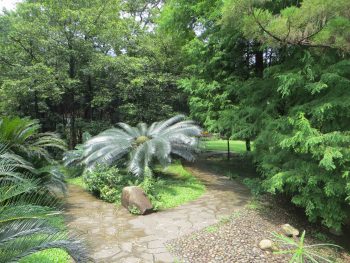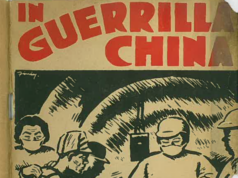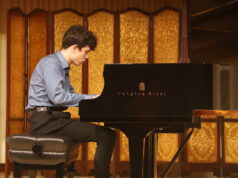If you had told me before I first went to China in 2007 that I would end-up having a lasting fascination, if not a love affair, for Chinese rubbish bins, I definitely would not have believed you!
I was a delegate on a Prominent Persons and Leaders Tour, organised by Youxie, and we were visiting the great city walls of Xi’an, when I chanced to spot a superb rubbish bin which was heavily disguised as a Qin dynasty bronze. It took real observation to spy that it was really a rubbish bin!
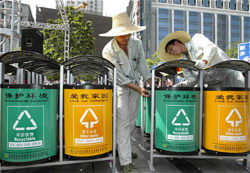
The Chinese Government, in the preparations for the Olympics to be held in Beijing, 2008, was promoting the image that China cared for the environment. Apart from the fact that they were making available double rubbish bins (with ‘Recyclable’ and ‘Other’ rubbish receptacles), unknown in NZ at the time, I was pleasantly surprised to find that rubbish bins of an amazing variety were widespread throughout China. I was also impressed that instructions were in English – for the sake of international tourists one supposes.
So, on further visits to China I was on the look out for rubbish bins…!
My next real ‘beauty’ was found on the Society’s ‘Diverse China Tour, 2013‘. As you can see in the photo, it promotes and reflects the nearby famous Chengyang Wind and Rain Bridge (above), built by the Dong minority people in Guizhou province. Bridges are very important to the Dong people, as, being covered, they serve as places to meet and chat and, in this case, shelter the many tourist-trap stalls…
As you will see from the photos in the gallery of images below, Chinese rubbish bins often reflect the local tourist delights and range from beautifully worked to the downright practical. They are certainly in evidence at all tourist sites. Hopefully, they indicate a growing desire by the Government to encourage cleanliness in all Chinese. They also show a great deal of variety and imagination!
Returning to the bin that started all this off , the Chinese character on it means ‘longevity`which first appeared about 200 B.C. To-day the form is 壽. The Chinese use it on anything, you-name-it, simply as a decorative pattern! As for the design of the bin itself, I think it is based perhaps on a Qin dynasty (220BC) bronze. Whatever! The designer of that rubbish bin did an excellent job in making a mundane object blend into its environment!
In the gallery below, each rubbish bin is, in most cases, paired with an image of the place or cultural spot (or perhaps, object) to which the bin is related.
—————————————————-
—————————————————-
—————————————————–
—————————————————-
—————————————————-
—————————————————-
—————————————————-
—————————————————-
Our teacher at Shandan Bailie School, Jane Furkert, sent me the following extra-ordinary bin. She says “They are flush with the footpath, keeping street furniture to a minimum. The lid is raised by pushing the cogged wheel with your foot. I understand they are fairly unusual – the Chinese I asked weren’t aware of them in any other cities. Interestingly, a Chinese tour guide, whom I asked about them, dismissed them disdainfully as ‘old technology'”…..
—————————————————-
National President Dave Bromwich contributed a facsimile tree-stump bin that he spotted in the South China Botanical Garden in Guangzhou. It was obviously meant to blend into the background. But I leave you to decide whether it does!
I hope this sample of the diverse ‘world’ of Chinese rubbish bins has opened your eyes and shown you how imaginative, and environmentally conscious, the Chinese are. This certainly was the case for me.
If you come across any unusual ones, I would very much like to add them to the collection. Please send an image of each and its environment, with information on its location, to me at [email protected].
Duncan France


